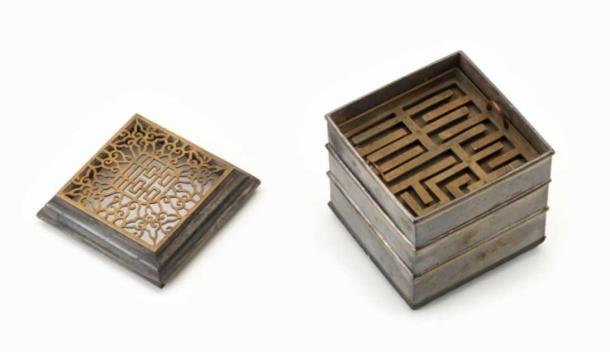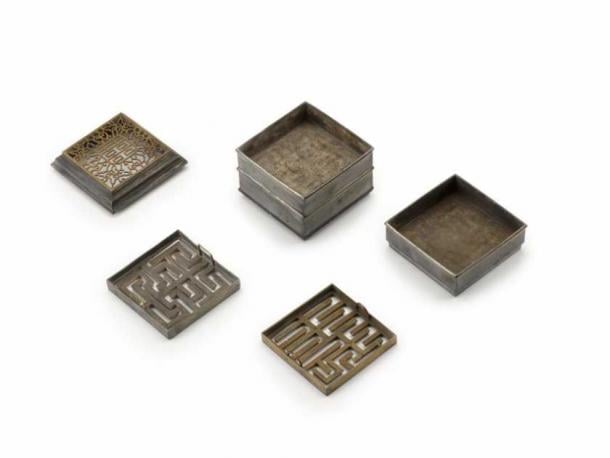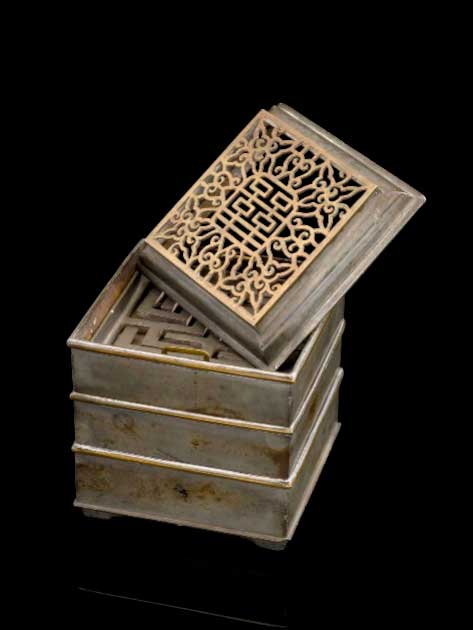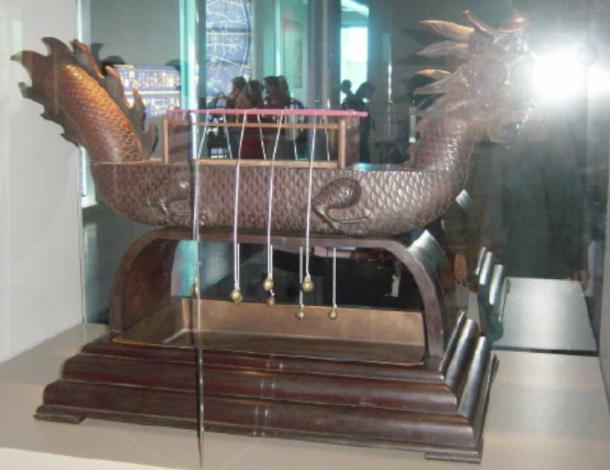
Ancient Incense Clocks: A Timely Glow
Checking the time hasn’t always been as easy as glancing at your smartphone. In ancient times, humans would determine the time by using devices made of sand, stone, shadows, wheels, and more. One ancient clock that doesn’t get mentioned often enough is the famous incense clock. Run primarily by fire, the incense clock was popular in China during the early Qing Dynasty, before mechanical clocks were accessible to all levels of society.
A unique concept compared to other ancient clock systems, incense clocks were simple to use, yet intricate in appearance. They were also essential to daily life, as people could also use these clocks like timers by lighting specific spots in the maze to burn at a ‘countdown’, which may have been helpful during cooking or working. But how exactly did these clocks work, and why were they used for so long?

Intricate, labyrinthine incense clocks were developed in Qing Dynasty China. (Science Museum Group / CC BY SA 4.0)
Incense Clocks Burned Through Time
Incense clocks were as intricate as they were accurate. To make the clocks burn for an entire day, they had to be designed like small mazes. Although they were small enough to fit into the palm of your hand, their tiny carvings would impressively loop around the entire face of the clock to form a detailed, perfectly spaced maze. The clocks were made of durable, fire-resistant metals so they could not be warped or scorched by the heat of the flame.
The incense clock consisted of multiple trays. The bottom tray contained tools needed to operate the clock, including a tiny shovel and a damper. The next tray up contained ashes to lay out along the incense trail, while the top tray contained different stencils for the clock. Each stencil was designed to burn for slightly different amounts of time. Although time itself did not inherently change, the stencils were designated for specific seasons. Since day lasted longer during the summer, and night lasted longer during the winter, they had different stencils to specify this change in daytime versus nighttime.
Users of the clock first used the damper to smooth the ashes in the middle layer. The layer had to be perfectly flat, or else the incense might have stopped prematurely during the day. Once the layer was flat, a stencil would be chosen according to the time of year. The stencil would then be placed on top of the flat ash layer, and the pattern would be carved out using the sharp end of the shovel. Once the shape was carved, incense could be added and lit.

The ornate lid of incense clocks helped vent smoke and control oxygen exposure (Science Museum Group / CC BY 4.0)
On top of this lit incense would be the top layer, the incense clock’s lacy lid. This lid was intricately designed, but was also essential to the operation of the clock. It would help vent smoke and control oxygen exposure. This simple lid helped prevent the incense from burning too quickly or being snuffed out prematurely.
If the incense clock did burn out prematurely, not all hope was lost. Since these clocks were used so frequently, it was fairly easy to determine the relationship between the time of day and the location burned on the clock. Individuals using the clocks could either restart the clock from the current time by comparing it to a clock that was still running, or could generally estimate how much time was left on the clock.

Chinese incense clocks were a designed to tell time, and sometimes for use as a timer (Science Group Museum / CC BY SA 4.0)
Incense Clock Variations: From Chimneys to Sniffs
Over the years, additional versions of the incense clock were developed. While many still used the traditional maze clock, others used newer versions that had small chimneys across the top lid. Those using this type of incense clock could determine the time by observing which chimney had smoke coming out of it at different times of the day. Others were more creative with the clock, and sometimes used different types of incense or scent chips throughout the maze, so they could tell the time just by sniffing the clock!
Ancient alarm clocks were also produced using incense clocks. Since incense clocks were operated by fire, they could also be used to develop a type of alarm. One of the simplest examples of this is the metal ball alarm clock. An incense clock would have a few tiny metal balls attached to it by thin threads. These threads would then be hung over the top of the incense clock. Once the incense clock burned to the threads, they would break and drop the tiny metal balls into a bowl below, creating a loud ‘alarm’.
This ‘alarm clock’ was so common that a giant version was once made for the emperor to help him wake in time for visitors or other special events. While they were common, some were worth considerably more in value, since the most beautiful incense clocks took more craftsmanship to develop. A simple incense clock had an ordinary block maze, but luxury incense clocks would have detailed, one-of-a-kind stencils that only the wealthy could afford.
- Where Death Rings in the Hour: The Amazing Medieval Astronomical Clock of Prague
- The Lost Cycle of Time: An Ancient Look at the Future

This ancient Chinese dragon-shaped device was constructed with a sequence of bells tied to a horizontally mounted burning incense clock. When the burning incense burnt and broke the threads, the bells fell down at preset interval to give an alarm. (Kowloonese / CC BY SA 3.0)
Who Needs Mechanical Clocks Anyways?
Incense clocks are over 1,300 years old, but historians continue to be fascinated by their long-standing accuracy. Due to their accuracy and affordability, they were used by average families for several centuries to tell and measure time. Plus, they made an attractive addition to any home with their intricate designs and warm glow.
Although we eventually turned to mechanical and now electronic clocks, our relationship with time has remained the same. Tracking time helps us make plans and complete tasks without worry. The next time you set your morning alarm (or alarm s), remember that it could be worse - you could be dependent on some fire and thread.
Top image: Intricate incense clocks were developed in Qing Dynasty China. Source: Science Museum Group / CC BY SA 4.0
By Lex Leigh
















Comments
That’s just silly. The rate of burn is determined by the available oxygen. The exact same ‘maze’ could burn twice or half as long depending on the ventilation. What else could they have been?
Nobody gets paid to tell the truth.